Foggy photos can be moody and emotional, but can also seem bland at times. However, add some color and fog takes on a whole new persona.
Painted Fog Everglades National Park
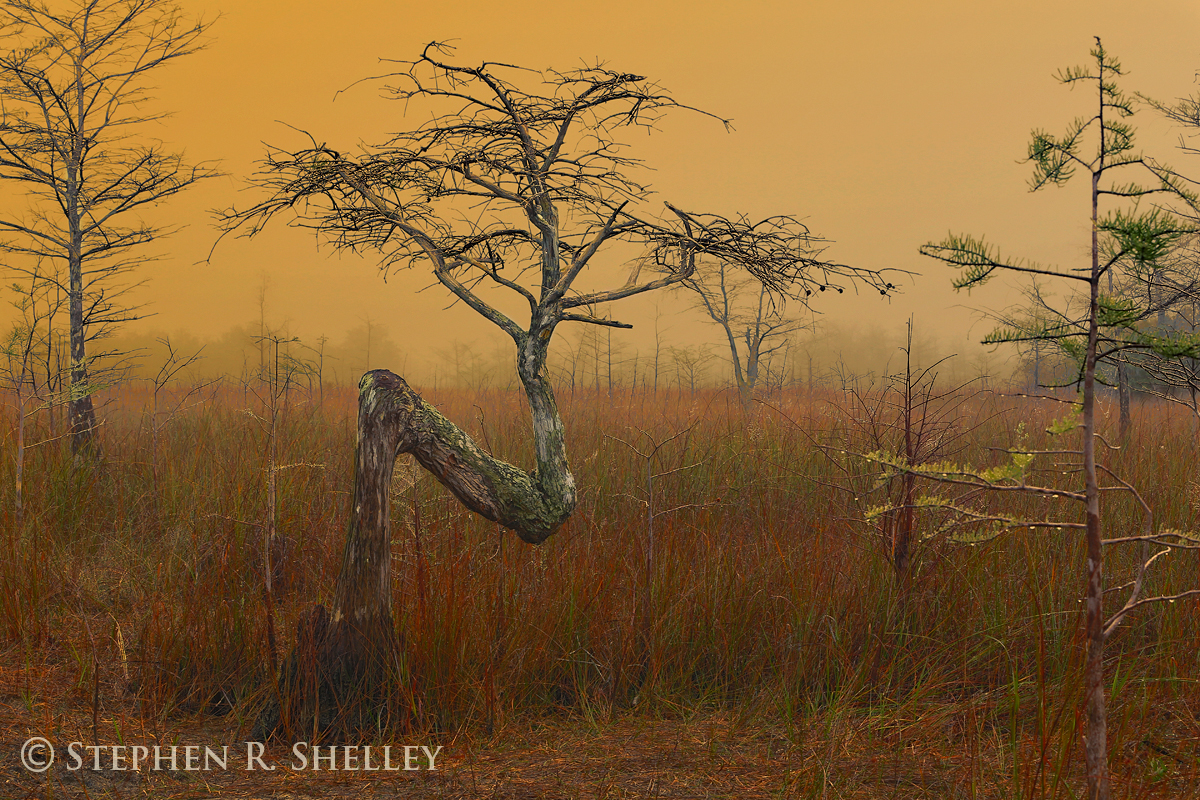
Follow Me On My Photography Adventures

Foggy photos can be moody and emotional, but can also seem bland at times. However, add some color and fog takes on a whole new persona.
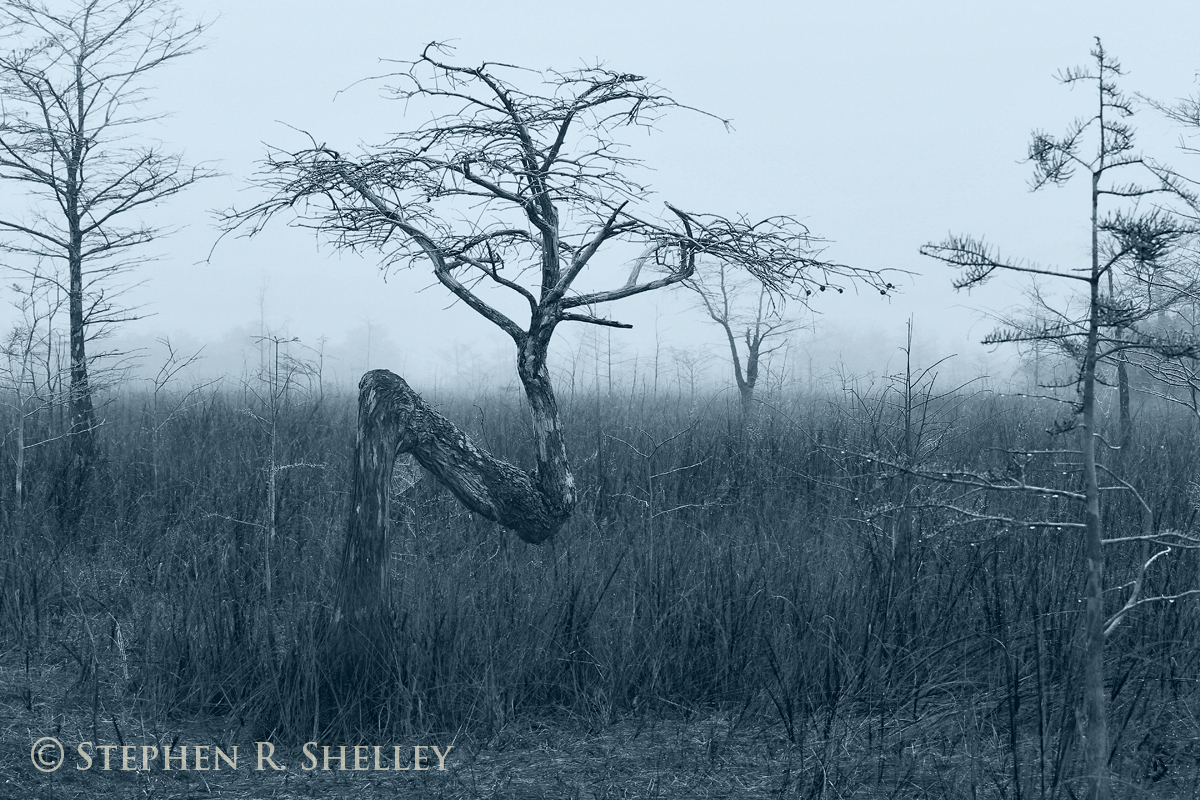
Photographing fog has been on my list of things to do for quite some time. Being that fog is unpredictable and happens early in the mornings, I have been procrastinating on setting my alarm. However, yesterday I saw that there was a dense fog advisory and high probability for fog so I decided to get up early and make a trip out to Everglades National Park.
The fog cooperated and was fairly heavy. The sun was scheduled to rise around 6:50 AM but did not make an appearance until after 9 as a result of the fog. I did not have a real plan on how to shoot the fog so I experimented as I went. I captured a few decent shots and learned a lot for my next photo trip.
I found that fog is best captured with a long lens that compresses the scene and more accurately reflects the scene. Unless you are in white out conditions, fog is more noticeable in the distance than right around you. This is more accurately captured and/or accentuated with a long lens versus a wide angle lens.
I still need to find the best subject matter to compliment the fog. I tried pine trees and cypress trees yesterday. Next trip I will work with some of the lakes and/or boardwalks.
Another lesson learned was that color photos and fog tend to be bland. I found that if I converted them to black and white they had more emotion.
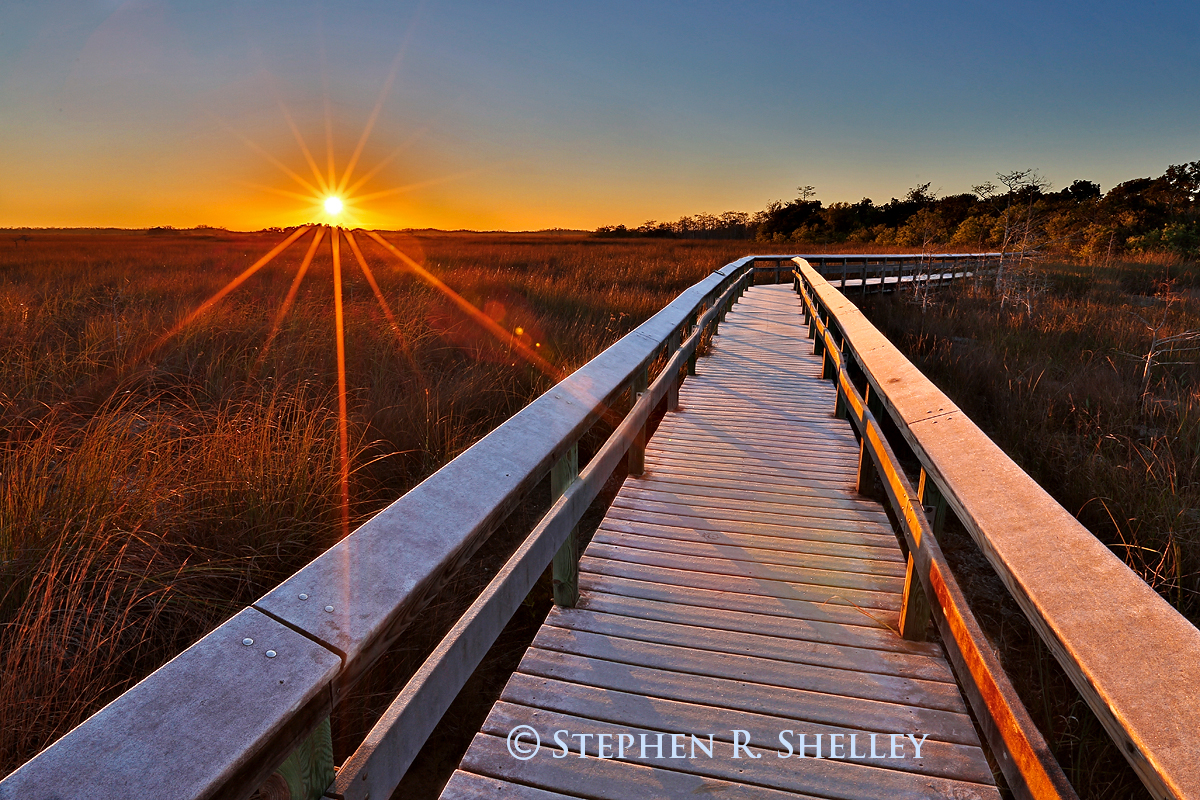
While looking at the weather forecast yesterday afternoon I came up with an idea for what could be a unique photograph. Yesterdays forecast called for the coldest weather South Florida has seen in more than 4 years. The lows in the interior were thought to dip to the mid 20’s to low 30’s and a freeze warning was issued by NOAA. I envisioned trying to capture an image in the everglades with white frost within the landscape. A unique image that would be hard to repeat unless you had the right conditions. I called a friend of mine, Robert Chaplin, and asked if he was interested in tagging along with me. He said yes, so we headed out this morning at 5:30 AM to see what we could create.
Unfortunately for us, but good for the local farmers, the temperatures were running some 4 degrees higher than forecast and the wind speeds also stayed higher than forecast limiting the formation of frost. I had hoped to have widespread white frost on the ground to set my scene but now I would have to find something else. We ended up at the Pahayokee Overlook Boardwalk. Man made objects, especially those raised off of the ground tend to freeze/frost faster than living plant matter. Luckily for me the Payhayokee Boardwalk was iced over when we got there from top to bottom.
I set up my shot to use the Boardwalk as my leading line and main subject matter since I was hoping to accentuate the icing. This proved problematic since prior to the sunrise there was no light to reflect off the ice and make it recognizable as ice. I ended up using my flash and flashlight to try and make the ice more visible. I never did end up with exactly what I was hoping for but I still managed to capture an image that is captivating and has visible ice. The only problem is that without the background story one may not realize that the white color is ice and not the normal color of the boardwalk.
Luckily as a bonus I captured a few other good photos both prior to the sun rising and afterward. I even got a visit from one of the local owls. All in all it was a successful trip even if not exactly how I planned it.
On the way out I stopped back by the Cypress Dome with the blooming Everglades Daisy’s to give it one more try. I know there is a good photo in there I just am having a hard time finding a way to capture it with my camera. So far I like this effort the best. I will see if it continues to grow on me.
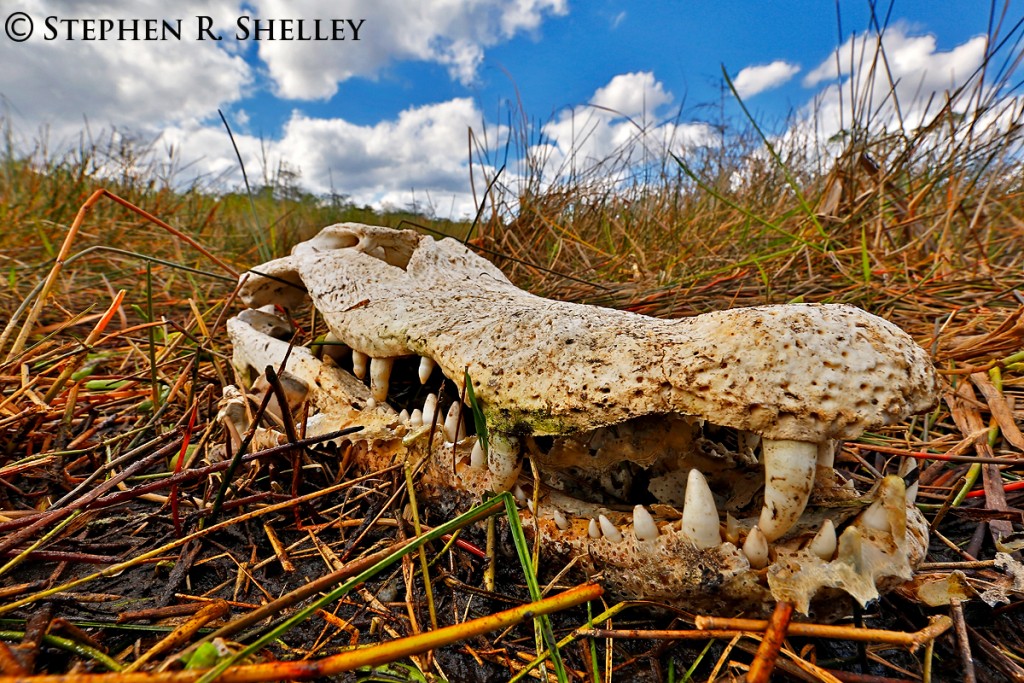
For Presidents Day I decided to take a day trip out to Everglades National Park to explore a few trails and Cypress Domes I have not been to in a while. The weather was great, not to hot, and there were little to any bugs to speak of.
I started my journey in a well known Cypress Dome called Double Dome. Most of the dome was dry except for the deep hole in the middle and few deeper spots here and there. However, dry is relative when talking about Cypress Domes. During the wet season Cypress Domes typically are full of water, anywhere from shin deep to waist deep. Therefore, dry means no standing water. However, there was plenty of squishy mud. Between the wet season and the complete dry season is a time period where the ground is mushy and soft. This was one of those times. Some of the Bromeliads were in bloom and the resident large gator was there guarding his watering hole and female. I saw a few Water Moccasins but none wanted to be photographed. There were also a good number of birds flying around and feeding in the few water holes remaining, including a couple of Great Blue Herons.
My next stop was a smaller less well know Cypress Dome that was full of blooming yellow flowers. I tried to capture the scene but found it to be pretty difficult. The scene was just to busy with all of the flowers, cypress trees and branches and then the grass. I am sure that printed very large it would all seem proportional, but shrunk down on a computer screen or at low resolution it is just hard to not be overwhelmed by complexity and overabundance of details.
After photographing the Cypress Dome, I then hiked a few other trails but did not find anything of interest to photograph. I finished the day by hiking a trail I had never been on but had spotted from Google Earth. On the trail I came across an alligator that had died some time ago. All that was left was some bones and the skull. They had all been bleached white by the sun. I took a few photos of it just for fun. It appeared to be a fairly good sized gator when it was alive.
I could envision capturing some good photos from this new trail given the right conditions. I will definitely hike it again.
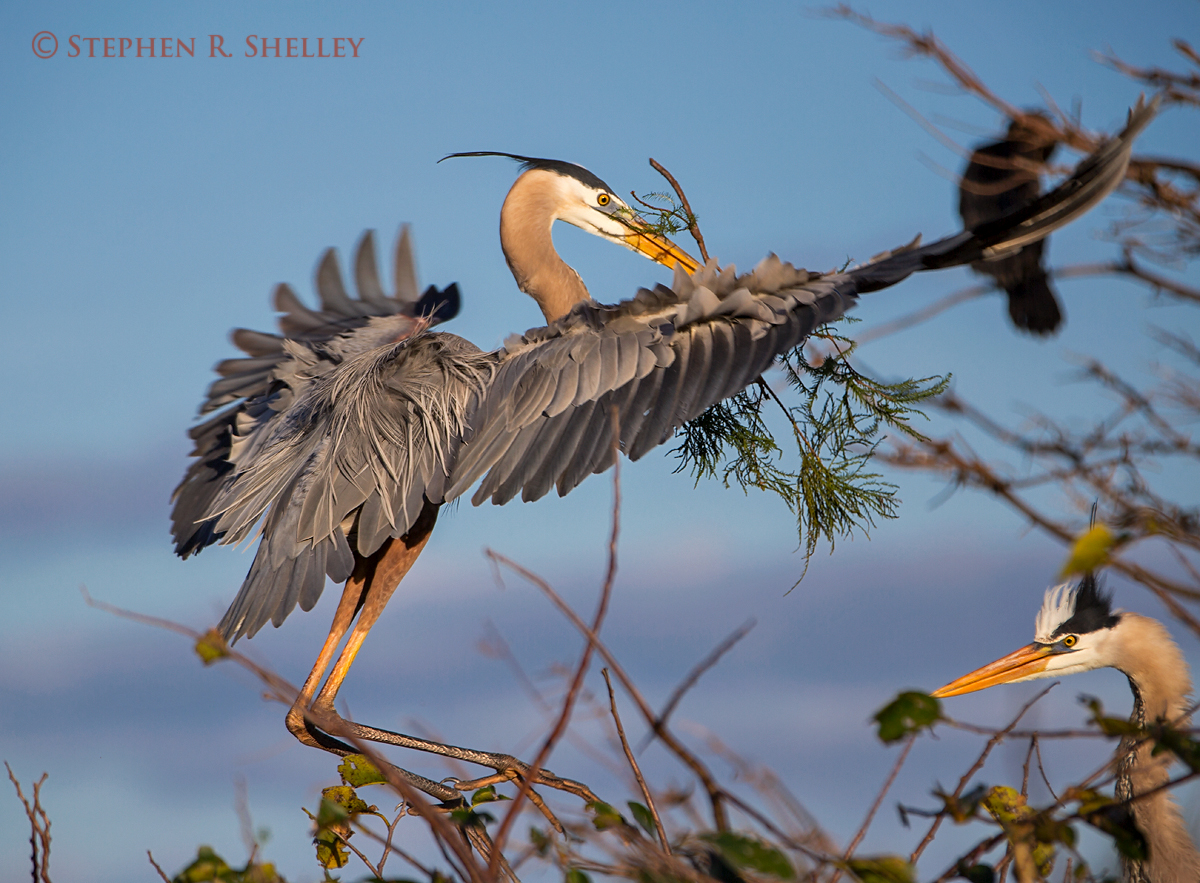
A few weeks ago I tagged along with fellow photographer, Robert Chaplin, who was scouting for an upcoming bird workshop. One of our stops was the Wakodahatchee Wetlands in Palm Beach County. The last time I was there was about three (3) years ago and I remembered it being full of nesting birds. When I returned this time it was just as I remembered it if not better. There were more than 10 nesting pairs of Great Blue Herons as well as numerous nesting anhingas and cormorants. The best part is that many of the nests are only a mere 10 to 15 feet from the elevated boardwalk making photographing them easy to do without the need to use a long lens.
Last time I visited during the early morning hours, this time I was there in the late afternoon just before sunset. While I was there some of the Great Blue Heron males were bring food to the sitting females as well as nesting materials. I was able to capture one of the males flying back and forth with nesting materials from a nearby tree. It was a lot of fun to watch much less photograph.
The most awe inspiring part about being there near sunset is the number of birds that fly in to roost for the evening. During the last 30 minutes or so before the sunset hundreds of birds of all varieties flew into the wetlands and started roosting in the nearby trees. By the time I left every tree was full of birds roosting for the evening.
Of all the bird locations I have visited Wakodahatchee is by far one of my favorites. It consistently produces a large number and variety of birds that can be easily photographed with any lens or camera. Eco Pond in Everglades National Park at its peak is the only other location that rivals Wakodahatchee in terms of numbers and variety. However, Eco Pond’s peak is only a few weeks out of every year.
For anyone who has not yet visited Wakodahatchee I encourage you to plan a trip. I can assure you it is worth the drive.
This past weekend the 30th Annual Everglades Coalition Conference took place in the only Three Palm Designated Hotel in the Florida Keys, the Hilton Key Largo which overlooks Florida Bay. The theme of this year’s conference was Send It South: Water For America’s Everglades. 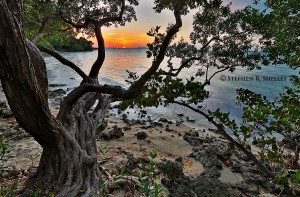
More than 300 people comprised of local state and federal elected officials, environmental advocacy groups, state and federal agencies, scientists, educators, media members, students and the general public came together this past weekend to work toward a common goal, restoration and preservation of the Everglades Ecosystem. The Everglades Coalition, who puts on the annual event, is an alliance of 57 local, state and national conservation and environmental organizations dedicated to full restoration of the Greater Everglades Ecosystem through advocacy, education, research and other efforts.
One of the highlights of this year’s conference was an appearance and keynote speech by United States Secretary of the Interior Sally Jewell. Prior to speaking at the conference, Secretary Jewell toured Florida Bay and Everglades National Park, including taking a slough slog through a cypress dome. Later that evening, Secretary Jewell acknowledged the determination and hard work of the Everglades Coalition and congratulated them on their many successes including bringing Everglades restoration and preservation initiatives to the fore front. Secretary Jewell went on to state that she would continue to be an advocate for restoration initiatives and that restoration of America’s Everglades is a top priority.
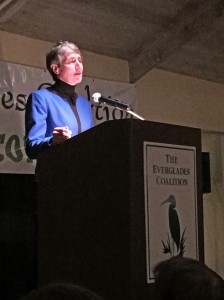 The location of the conference next to Florida Bay was fitting as many of the discussions centered on Florida Bay and how the condition of the plants and animals within it are key indicators of the health of the Everglades watershed. The consensus among experts is that more freshwater needs to be delivered into the surrounding tributaries north of Florida Bay in order to reach historical salinity levels and create an environment in which the fish, birds and plants can thrive. To effectuate this, water that is now being diverted east and west needs to be re-engineered to once again flow south.
The location of the conference next to Florida Bay was fitting as many of the discussions centered on Florida Bay and how the condition of the plants and animals within it are key indicators of the health of the Everglades watershed. The consensus among experts is that more freshwater needs to be delivered into the surrounding tributaries north of Florida Bay in order to reach historical salinity levels and create an environment in which the fish, birds and plants can thrive. To effectuate this, water that is now being diverted east and west needs to be re-engineered to once again flow south.
Presently, water that has historically flowed south to Everglades National Park and Florida Bay is instead now being diverted West to the Gulf of Mexico and East to the Atlantic Ocean through a series of canals. The diverted water contains high levels of nitrogen and other contaminants that are not given the opportunity to be filtered out through natural processes. The result is frequent toxic algae blooms that can decimate the plant and animal life it encounters. As a result, not only is Everglades National Park and Florida Bay being deprived of the water it needs, but the diverted water is now wreaking havoc on otherwise healthy ecosystems.
The good news for advocates is that most parties now seem to agree that the problem needs to be addressed however, a unified solution remains elusive. The main stumbling block is that the land necessary to restore clean natural water flow south from Lake Okeechobee is presently in the hands of private land owners. This land is needed to create water storage retention areas that can be used to naturally filter the contaminants from the water as well as give the Water Management Districts the tools they need to properly control the rate of flow during the rainy and dry seasons. Advocates for Everglades restoration hope that Amendment One (1), passed by 70% of Florida’s voters, will help provide a necessary state revenue source to purchase lands and fund water projects to send the water south.
While a solution is being devised, other projects are already moving forward further south to help increase the flow to Everglades National Park and Florida Bay and restore the Everglades Ecosystem. Most of these projects are 20 years in the making and have had to carefully balance the need for flood control for the heavily populated areas in South Florida with the need to restore the natural sheet flow of water through the Everglades. Some projects have been completed, such as the 1 mile bridge on Tamiami Trail, or are nearing completion like the Picayune Strand restoration and pump project, whereas others have stalled due to a lack of federal funding.
On this front, legislation has been filed by both the Federal House and Senate to expedite 1.9 billion in funding for restoration projects set forth in the Central Everglades Planning Project (CEPP), specifically those focused on moving the water south. The legislation has bi-partisan support but was not heard during the recent lame duck session. It is anticipated that action will be taken on the proposed legislation during the 114th Congress. 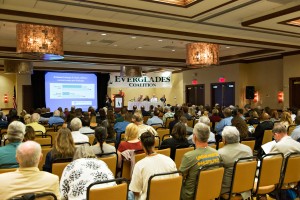
What does a restored Everglades mean to Florida and local communities? Traditionally, most arguments in favor of Everglades restoration have focused on environmental and scientific facts and figures. However, recently the argument for Everglades restoration has morphed into an discussion of economics and return on investment.
In 2011, Florida had 87.3 million visitors that generated 67 billion dollars and resulted in Florida being the number one (1) tourist destination in the world. The attraction for many of Florida’s visitors is its natural resources such as lakes, rivers, beaches, parks and forests. Fishing and related activities accounted for 80,200 jobs and 5 billion dollars in annual revenue. Photography, bird and animal watching activities generated more than 5.2 billion dollars. In 2011, Florida’s state parks had 21.1 million visitors, the Magic Kingdom in Orlando only had 18 million visitors. In 2013, Florida’s National Parks had 10.2 million visitors.
The argument for restoration economics is that without clean water and a healthy ecosystem there will not be any fish to catch, birds to watch or nature to enjoy. A depleted and unhealthy ecosystem will result in a huge negative economic impact to Florida’s economy and a loss of hundreds of thousands of jobs.
A recent study funded by the Everglades Foundation found that for every $1 invested in Everglades Restoration activities $4 will be generated in economic benefits or a 4 to 1 return on investment. It is estimated that a restored everglades will add an additional 46.5 billion dollars to the Florida economy over the next 50 years and create an additional 440,000 jobs.
Everglades restoration and activities related thereto have the potential to create huge economic benefits to those communities ready to embrace the environment around them. By branding themselves as the “Gateway to Everglades and Biscayne National Parks” and building a partnership with their neighboring national parks, the City of Homestead has already positioned itself to not only advocate for its neighbors but to also benefit economically.
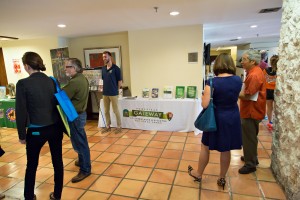 The Homestead National Parks Trolley has already generated economic benefits to Historic Downtown Homestead by hosting more than 5,000 riders during last year’s shortened trolley season. Additional projects already in the works, such as the Biscayne/Everglades Greenway, look to further solidify the City’s partnerships and create additional economic benefits to both the City and the National Parks.
The Homestead National Parks Trolley has already generated economic benefits to Historic Downtown Homestead by hosting more than 5,000 riders during last year’s shortened trolley season. Additional projects already in the works, such as the Biscayne/Everglades Greenway, look to further solidify the City’s partnerships and create additional economic benefits to both the City and the National Parks.
Moreover, the City of Homestead’s connections with Everglades and Biscayne National Parks have created positive news media coverage both locally and nationally, providing invaluable marketing dollars to the City of Homestead. The most recent national media coverage centered on the release of the Everglades Quarter this past December and the Homestead National Parks Trolley’s participation in NASCAR this past November.
A restored Everglades benefits all; the wildlife, residents, local communities and the economy of the State of Florida.
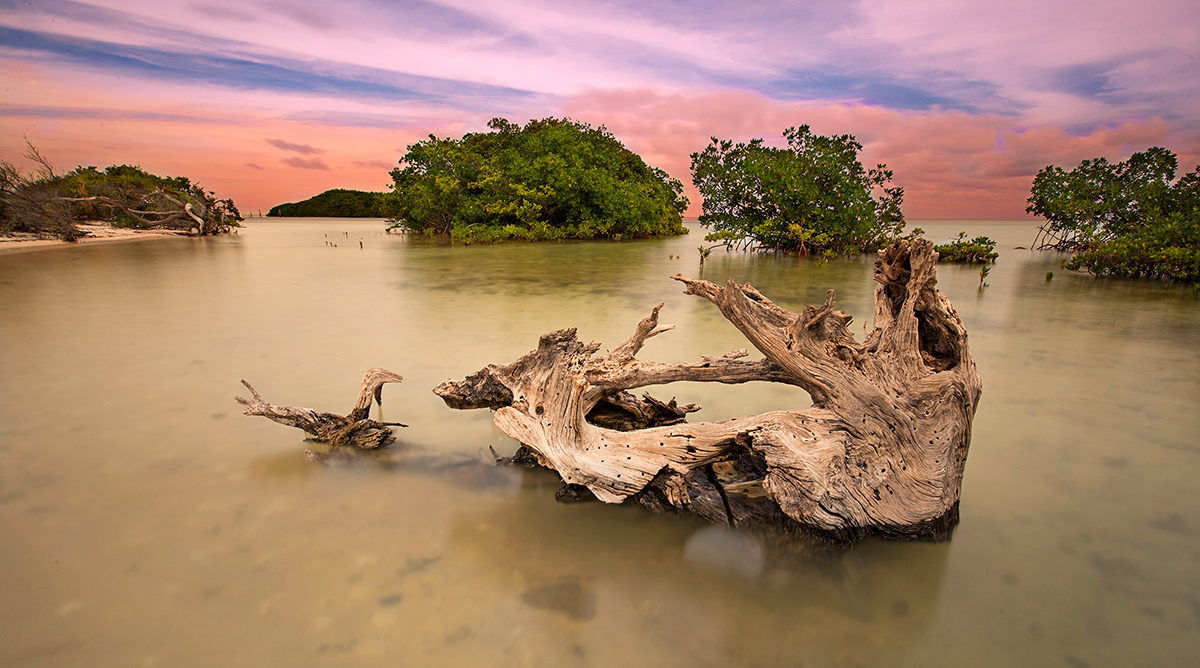
I was recently asked to provide some images for an upcoming event called Baynanza organized and run by Miami-Dade County. The purpose of Baynanza is to promote clean water and organize volunteer groups to pick up trash and debris in and around Biscayne Bay. The organizers needed my images for the calendar of events and other marketing materials. The only problem was that I did not have many images from around Biscayne Bay and the Park. Therefore, I spent much of the past two weeks during the Christmas Holiday out in Biscayne Bay with my camera trying to capture inspiring images that could be used to promote this great cause.
I managed to capture some great sunrises and sunsets thanks to the thin layer of overcast clouds that persisted for a few days and turned a vibrant color of pink and orange. There were other images that I had envisioned but just did not have the right weather conditions or time to capture.
I found Biscayne Bay and Biscayne National Park surprisingly hard to photograph in a creative way. Everything looks the same and 98% of it is water. I found it very difficult to create a captivating subject or scene that was not just blue water and puffy clouds. It did not help that I have not done much exploring in the Bay as I am sure photography opportunities exist I just need to find them. The other issue I encountered is that it is hard to explore the shorelines without a canoe or kayak due to the very shallow waters and flats.
I love a challenge so even though my responsibilities to the Baynanza Calendar have concluded, I hope to continue trying to capture some captivating photos of the park and bay for my collection.
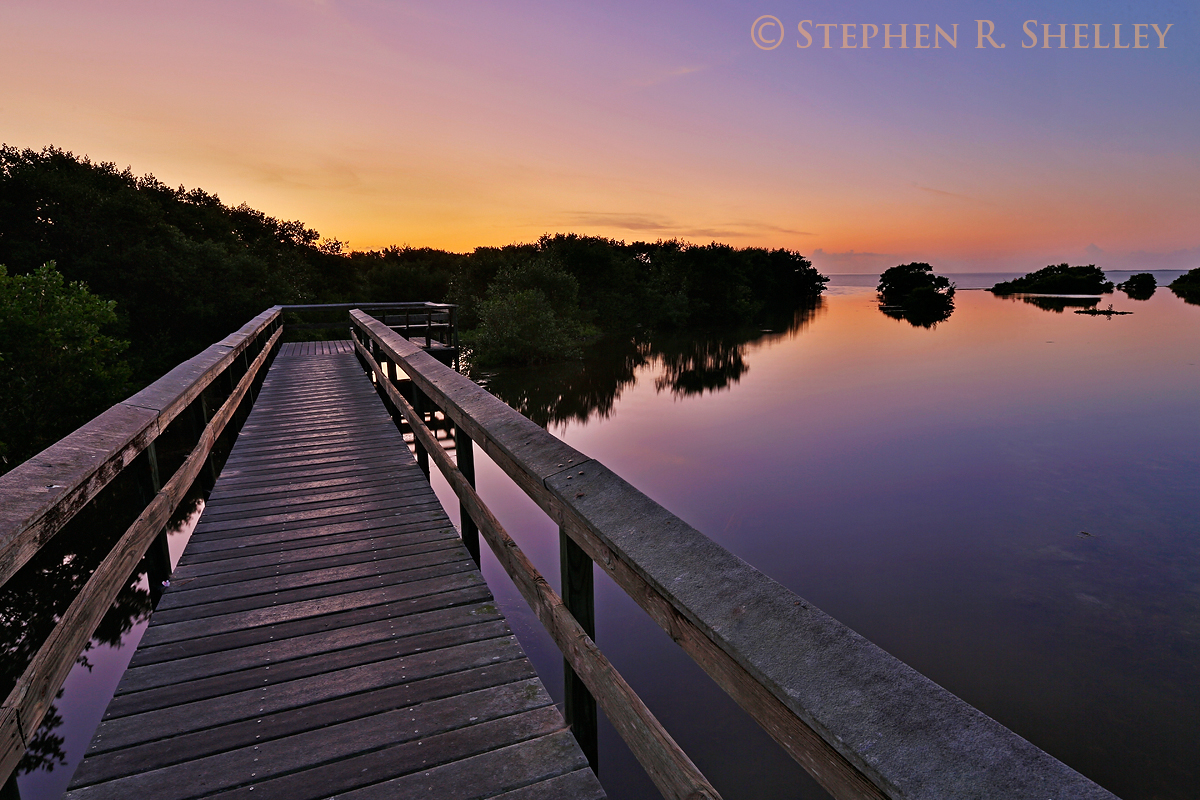
This morning a few members from the newly formed South Florida National Parks Camera Club took an early morning bike ride down Snake Bight trail in Everglades National Park. The goal was to capture a sunrise over Florida Bay. We left Homestead around 4:30 and arrived at the trial head around 5:30. The trail is only about 2 miles long but at night in the dark it is much harder to traverse. On this trip it was even harder than we anticipated due to the lack of maintenance and how overgrown the trail was. In fact one of the members of our party encountered a fallen log that was not visible due to the high grass and fell off his bike. No one was seriously hurt but he was definitely sore the rest of the day.
Eventually we made the Snake Bight boardwalk just at prime light. I managed to capture a few images before the rest of the guys caught their breath and got their camera equipment set up. As a result I was able to capture an image of the empty boardwalk and use it as a leading line toward the rising glow of the sun. I was happy with the composition and colors in this image and will likely add it to my website collection.
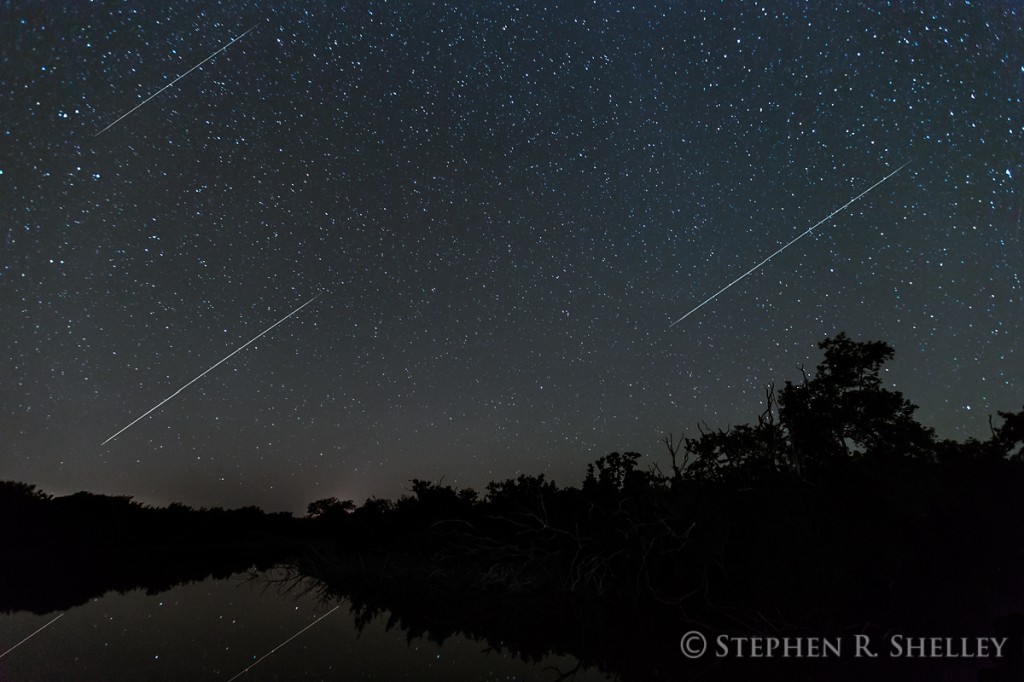
A photographer friend and I decided on the spur of the moment to head out to the Everglades to photograph this years Geminid Meteor shower. We knew the almost full moon would rise around midnight so we only had a small window of opportunity to watch and photograph natures fireworks display. We started at Mahogany Hammock and worked our way down to Flamingo.
I am glad we decided to make the trip because this years shower was the best I have seen in quite some time. It seemed that every few seconds one, two or even three meteors were streaking across the sky. We even saw a few green fireballs. It may have also helped that we found a new dark site that blocked out much of the light pollution from Miami and the Keys.
I had a great time but did not come home with a lot of keeper images. However, I did capture one good long exposure image and combined my three best meteors into the same image to create a more dramatic effect.
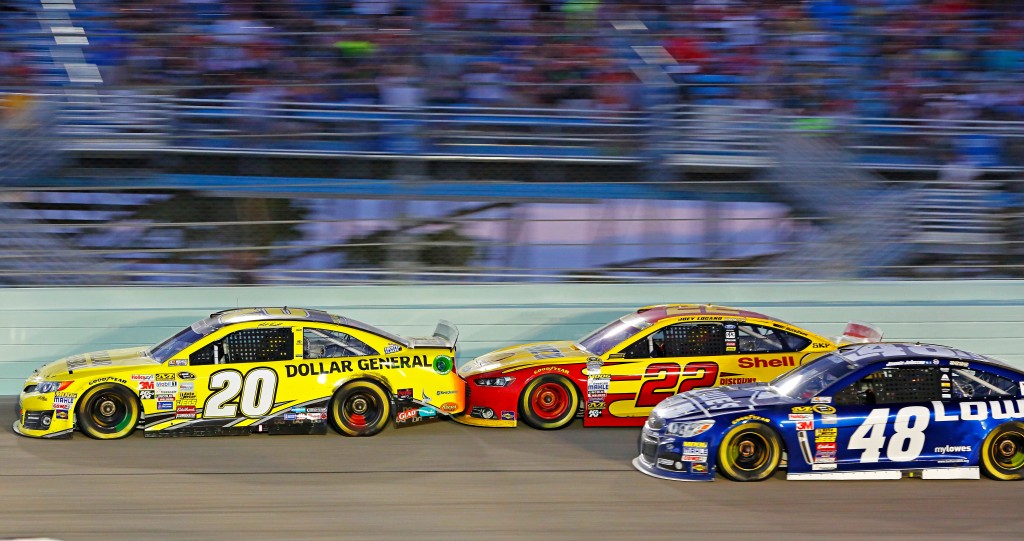
The 2014 Ford 400 Sprint Cup Championship race at Homestead-Miami Speedway was one the of the best races I have witnessed over the last 10 years at the track. There was a lot of excitement and electricity going into the final race this year and it did not disappoint. This was also the first year I was able to use my new Canon 5D Mark III camera to shoot motorsports. Compared to my old T3i it was like night and day. The autofocus was much faster and therefore easier to track the cars as they flew by at 200 mph. Also, the ability to shoot at higher ISO’s without photo degradation was also much nicer. Last year the highest I would dare shoot was 1600, this year many of my shots were 4000 and looked cleaner than last years shot at 1600. Here a few photos I captured at this years event.